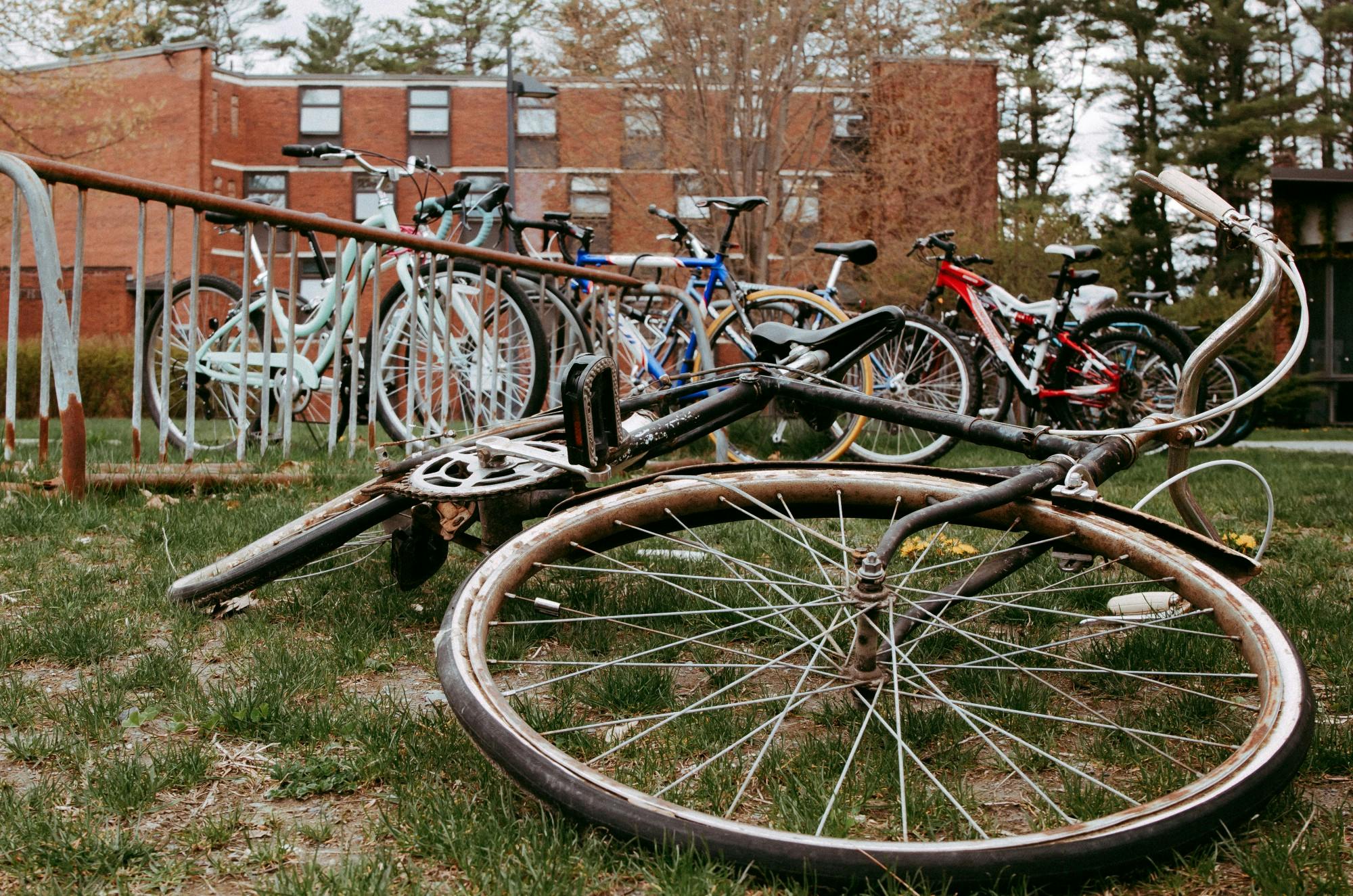The Hanover Bike Walk Committee, which advocates for better road safety for pedestrians, plans to present its Walk Bike Plan to the Selectboard at some point after the town meeting on May 9, Bike Walk Committee chair Jennie Chamberlain said.
The issue of road safety rose to prominence after 91-year-old Hanover resident Lucile Bailey died on Oct. 22, 2017, after being struck by a bicyclist on the sidewalk by the area formerly known as Rivercrest. The incident led to calls for clearer guidelines around how cyclists, pedestrians and cars should conduct themselves in Hanover, Hanover Bike Walk Committee member Bill Young said.
The Walk Bike Plan provides a framework and roadmap for potential policy solutions to the Town of Hanover for making walking and biking safer and more accessible, Chamberlain said. It also advocates for three goals: encouraging walking and biking instead of driving for short everyday trips, creating a “walk bike network” and forming best practices regarding safety.
To achieve these goals, the plan advocates for the design and construction of bicycle and pedestrian paths, as well as other infrastructure, such as covered bike parking and “human-scaled” lighting, Chamberlain said. In addition to infrastructure, the plan proposes policies including reducing the default speed limit to 25 mph and educating Hanover residents through bike safety events.
Chamberlain said that the state of bike and pedestrian safety across the country is “appalling.” According to the Governors Highway Safety Association, pedestrian fatalities reached a 40-year-high in 2021, with nearly 43,000 fatalities on U.S. roadways.
“Our safety on the roads has diminished,” Chamberlain said. “It’s alarming.”
According to Chamberlain, the proposal’s two major suggestions to improve safety are to build separate paths for pedestrians and cyclists and to make these paths “convenient” for walking and biking. She added that wide bike lanes and paths are needed to fix the issue.
“The paths that we lay down matter,” Chamberlain said. “If walking or biking paths are dangerous, people will try them once and then decide not to use them again.”
Since 1994, pedestrian and cyclist deaths have increased by 19% and 17% respectively, according to the U.S. National Highway Traffic Safety Administration.
The decrease in safety for pedestrians and cyclists comes in part from faster speeds on roads, Chamberlain said, adding that cars often drive faster than the posted speed limits. When speed increases, Chamberlain explained, the drivers’ vision abilities decrease, which leads to more crashes.
“Once you raise the speed limit, you need to design the roads to make it easier to navigate,” Chamberlain said. “There is really good evidence that just changing the sign lowers the speed limit — the flagrant speeding especially.”
With the emergence of new forms of transportation, such as electric bikes and scooters, new safety guidelines are needed urgently, Young said. However, there is no plan from either the College or the town on what rules should govern e-scooters and e-bikes.
“National guidance is that e-mobility works best on facilities that are designed for bikes,” Chamberlain said. “To make that possible, we need to widen our bike lanes and paths.”
Wendell Wu ’23 said that he recognizes the problem of students riding bikes on sidewalks but said he is concerned about the inconvenience of having to walk bikes as a result. He added that independent bike lanes or bike paths would increase efficiency and reduce the number of cyclists on sidewalks.
“The convenience of having a bike is being able to get places fast,” Wu said. “If you actually invested in minimal bike lanes or protections [for bikers], it would solve the problem [of cyclists on sidewalks].”
Chamberlain said that the broader vision of the Hanover Bike Walk Committee is to create more walkable and bikeable communities, while fostering behaviors that are good for the environment.
“We should be thinking about who public spaces are designed for,” Chamberlain said. “When we can shift our mobility to living lighter on the earth, we can be more connected and more economically efficient.”
Correction Appended (July 3, 11:30 a.m.): A previous version of this article incorrectly stated the location of where Bailey died by being struck by a bicyclist in 2017. She was struck on the sidewalk by the area formerly known as Rivercrest, not the Hanover Multi-Use Path. The article has been updated.
Kent Friel ‘26 is an executive editor at The Dartmouth.




